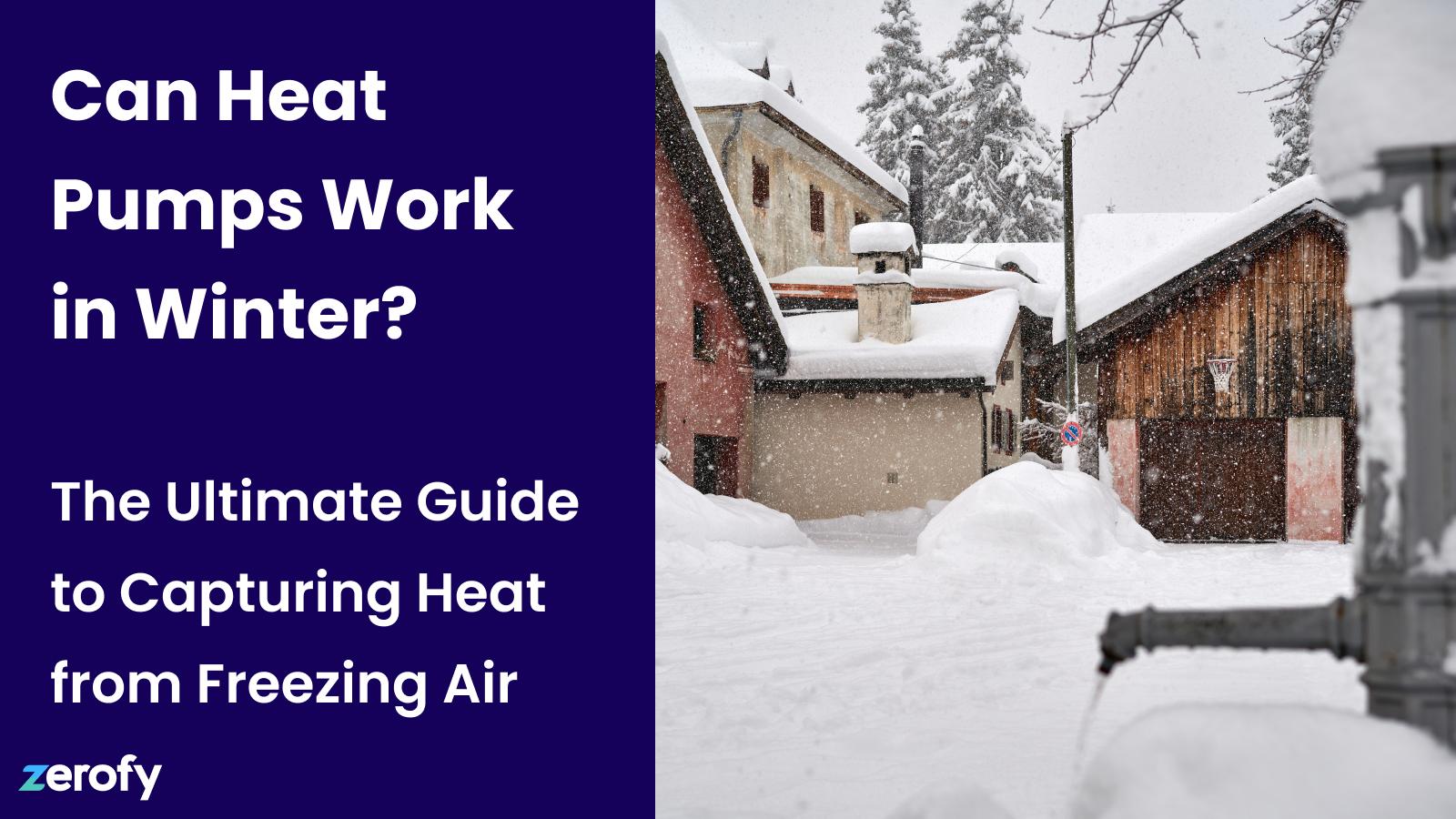Can Heat Pumps Work in Winter?

The Ultimate Guide to Capturing Heat from Freezing Air
It’s getting colder in the Northern Hemisphere, and winter will be here before you know it. As the temperatures drop, let’s dive into a topic that can be a little tricky to understand: how do heat pumps function when it’s cold outside?
Heat pumps are so efficient because they don’t need to create heat. Instead, they transport (pump) it from one place to another, even when temperatures drop below zero. But how can heat be extracted from freezing air? To answer this question, we first need to understand two key concepts.
Concept #1: Cold Air Contains Energy
Even when the air outside is below freezing, it still contains some heat energy. Temperatures below freezing might feel extremely cold to us, but they are still far above what is known as absolute zero, or the temperature when all molecules stop moving. At absolute zero, which is -273.15°C, no energy would be left to extract. So, as long as the temperature stays above absolute zero, the air molecules are still moving, which means they contain energy.
Concept #2: Heat is Energy
Think about the destructive hurricanes that have been brewing over the Atlantic Ocean this year. You’ll often hear that hurricanes are fueled by warm water. This year’s hurricanes have become so large and destructive because climate change is causing the surface water temperature in the Gulf of Mexico to be abnormally hot. As these storms move across the hot ocean water, this extra heat functions as an energy supply, allowing them to grow larger and stronger.
Bringing it Together
With these concepts in mind, we are well on our way to understanding how a heat pump functions in cold weather. In the case of heat pumps, think of “heat” and “energy” as interchangeable. We said that cold air has energy, so for our purposes, this means that the cold air still has some heat. No matter how cold the air feels, there is still some heat (energy) for the heat pump to draw on.
From Freezing Air to Indoor Warmth
Now, how does this all work in practice? Heat pumps contain a refrigerant with a very low boiling point (usually below -25°C, meaning the temperature of the liquid refrigerant is going to be lower than the air temperature outside. The Second Law of Thermodynamics tells us that heat will always flow from a region of higher temperature to a region of lower temperature, so when the colder refrigerant moves through the outdoor unit of the heat pump, the heat from the warmer outdoor air is drawn into it.
When this refrigerant circulates through the outdoor unit of the heat pump, it absorbs heat from the outside air. As the refrigerant warms up, it eventually evaporates into a gas that can be compressed and sent indoors. When you compress a gas, all of its molecules are forced closer together, causing them to bounce into each other more frequently. Those molecules bumping into each other generate heat, making our gas warmer than the air inside the house.
Since heat always moves toward colder areas, the heat from the now-warm refrigerant is transferred indoors, where it helps to heat the home. The refrigerant then cools down, turns back into a liquid, and the cycle repeats, efficiently keeping your home warm, even in freezing temperatures.
Optimise Your Home’s Heat Pump Efficiency
Now that we understand how heat pumps function in winter, imagine if you could make their operation smarter. That’s where Zerofy’s Home Energy Management System (HEMS) comes in. Zerofy integrates with HVAC brands like Nibe, Sensibo, and Daikin, allowing users to control their heat pumps directly from the Zerofy app, and provides insights into electricity consumption for smarter, more cost-efficient operations. By automatically triggering heat pump usage when renewable energy is abundant, or electricity prices are at their lowest, Zerofy helps users reduce both energy costs and household emissions.
Don’t have a smart heat pump but still want to take advantage of these capabilities? That’s not a problem with Sensibo’s Smart AC & Heat Pump Control. If your air-to-air heat pump has a wireless remote control, Sensibo can turn it into a smart appliance. Zerofy integrates directly with the Sensibo device, giving users more control over their overall energy consumption and usage patterns.
Download the Zerofy app today to get started.
If you’re thinking about making the switch to a heat pump for your heating and cooling needs, but don’t know where to get started, check out our comparison of some of the top-performing heat pumps on the market.